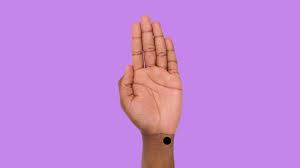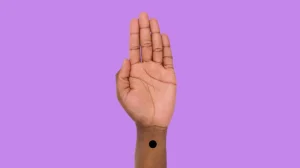Using breathing exercises, calming visualizations, and improved sleep habits may help you drift off more quickly.
If you often find yourself lying in bed trying to fall asleep rather than actually getting rest, you’re not alone.
It’s estimated that about one in three Americans struggle with not getting enough sleep. While the ideal amount of sleep varies with age, most adults should aim for at least 7 hours of sleep within a 24-hour period.

Lack of adequate sleep can have serious effects on both mental and physical health, including:
-
Ongoing tiredness, irritability, or difficulty relaxing
-
Reduced concentration, performance, and memory retention
-
Greater chances of anxiety and depression
-
Increased risk of heart conditions, obesity, and diabetes
Sometimes, the harder you try to fall asleep, the more anxious and mentally alert you become—making it even tougher for your body to settle down.
Before trying sleep techniques, it’s essential to evaluate three key areas:
-
Sleep hygiene
-
Your sleep environment
-
Your daytime routines
How Can You Fall Asleep Instantly?
If you’ve addressed your sleep setup and habits but still find yourself struggling, there are some practical and anecdotal techniques that may help you fall asleep more quickly.
Fall Asleep in 10 Seconds
It’s rare to fall asleep within 10 seconds without lots of practice, but it’s possible to work toward this goal using the military method.
The Military Method
Popularized by writer Sharon Ackman and originally described in Lloyd Bud Winter’s 1981 book Relax and Win: Championship Performance, this approach was developed to help WWII Navy pilots fall asleep in high-stress environments. With about 6 weeks of consistent practice, a reported 96% of pilots were able to fall asleep in two minutes—even in challenging conditions like loud environments or after consuming caffeine.
Although there’s little scientific evidence to validate these claims, the last 10 seconds of the method are often when sleep sets in.
Steps for the Military Method:
-
Completely relax your facial muscles, including the inside of your mouth.
-
Drop your shoulders and let your arms rest by your sides.
-
Exhale, letting your chest relax.
-
Relax your lower body—thighs, calves, and feet.
-
Clear your mind for 10 seconds by visualizing something peaceful.
-
If this doesn’t work, try repeating the phrase “don’t think” for 10 seconds.
-
You should fall asleep shortly afterward.
If this technique doesn’t work immediately, you may need to focus on improving your breathing and muscle relaxation. People with anxiety or ADHD might find it less effective.
Fall Asleep in 60 Seconds
If you need a little more time to unwind, you can try these techniques, which help quiet your mind through breathing and muscle relaxation. Beginners might need up to 2 minutes to experience full results.
The 4-7-8 Breathing Technique
Created by Dr. Andrew Weil and inspired by pranayama (a yogic breathing technique), this exercise encourages relaxation through controlled breathing.
Note: People with respiratory issues like asthma or COPD should consult a doctor before trying this method, as it may affect breathing.
How to Practice 4-7-8 Breathing:
-
Place the tip of your tongue behind your upper front teeth and keep it there.
-
Slightly part your lips and exhale fully through your mouth, making a whooshing sound.
-
Close your mouth and inhale quietly through your nose for 4 seconds.
-
Hold your breath for 7 seconds.
-
Exhale through your mouth with a whooshing sound for 8 seconds.
Repeat this cycle four times, but allow yourself to fall asleep sooner if relaxation takes over.
Progressive Muscle Relaxation (PMR)
Also called deep muscle relaxation, PMR helps release physical tension and encourages a state of calm. It involves tensing and then relaxing each muscle group in your body.
Pairing this with the 4-7-8 breathing method can enhance its calming effects.
Progressive Muscle Relaxation Steps:
-
Raise your eyebrows as high as you can for 5 seconds.
-
Release and rest for 10 seconds.
-
Smile widely for 5 seconds to tense your cheeks. Release.
-
Pause for another 10 seconds.
-
Squint tightly for 5 seconds. Let go.
-
Tilt your head back slightly and hold for 5 seconds. Relax.
Continue working down your body: arms, chest, abdomen, legs, and feet. Let yourself fall asleep, even if you don’t finish the entire routine.
Fall Asleep in 120 Seconds
Still struggling to fall asleep? Try one of these additional methods.
Use Reverse Psychology: Stay Awake
Trying hard to sleep can create anxiety and make things worse. One technique, known as paradoxical intention (PI), involves deliberately trying to stay awake.
According to a 2021 study, this method may help reduce sleep anxiety and improve your perceived sleep quality. Although more research is needed, it may work better than traditional breathing techniques for some people.
Create a Peaceful Mental Image
If your brain finds counting too stimulating, visualizing a calm scene might help.
A 2002 study from the University of Oxford found that people who visualized tranquil settings fell asleep faster than those using mental distraction or no techniques at all.
Try Imagery Distraction:
Picture a peaceful waterfall, the sound of water splashing, and the earthy scent of moss. Let this calming image fill your thoughts so there’s no room for anxious or stressful thinking.
Try Acupressure Points
A 2019 review suggested acupressure might slightly reduce the time it takes to fall asleep and improve sleep efficiency. Though more research is needed, a few pressure points may be helpful.
Key Acupressure Points for Sleep:
-
Spirit Gate

-
Find the small dip on your wrist near your pinky.
-
Gently massage in circles for 2–3 minutes.
-
Apply gentle pressure to both sides of the wrist.
-
-
Inner Frontier Gate

-
Locate the spot three finger-widths below your wrist crease, between two tendons.
-
Press firmly with your thumb and massage in circles or up-and-down motions.
-
-
Wind Pool

-
Interlace your fingers and cup the back of your head.
-
Press your thumbs where your skull meets your neck.
-
Massage with firm pressure in circles or vertical motions while breathing deeply.
-
FAQs
How can I fall asleep fast right now?
Start by checking your basics:
-
Maintain a regular bedtime routine and avoid screens before bed.
-
Make sure your room is dark, quiet, and at a comfortable temperature.
-
Stay active during the day and avoid caffeine late in the day.
Then, try these quick methods:
-
Military sleep method
-
4-7-8 breathing
-
Progressive muscle relaxation
-
Visualization or paradoxical intention
-
Acupressure techniques
Why can’t I sleep at night?
Many factors can interfere with sleep:
-
Mental health issues like anxiety or depression
-
Poor sleeping conditions (noise, temperature, lighting)
-
Late caffeine intake, minimal sunlight, or lack of exercise
-
Use of electronic devices before bed
-
Certain medications
Why do I struggle to fall asleep even when I’m tired?
This could be due to:
-
Disrupted circadian rhythms
-
Napping during the day
-
Stress or overstimulation
-
Screen time or late-night eating habits
Takeaway
If you find it difficult to fall asleep, the issue may lie in your lifestyle habits, sleep environment, or how you spend your day. However, even with these areas in check, falling asleep quickly can still be a challenge.
Practicing breathing techniques, muscle relaxation, or calming imagery might help your mind and body wind down. If you continue to experience trouble falling asleep despite trying these strategies, it may be time to consult a medical professional to uncover any underlying causes.

